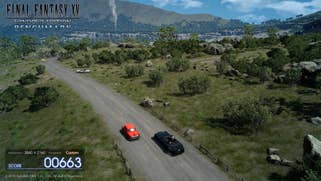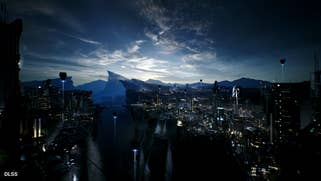Nvidia GeForce RTX 2080 Super - the Digital Foundry verdict
A welcome performance bump - but RTX 2080 Ti is still the undisputed king of the hill.
Nvidia may well have been in a tight spot in coming up with a Super version of the existing RTX 2080. With 2060S and 2070S, the firm had the latitude to access features and silicon from the existing, more powerful 2070 and 2080 products, but for obvious reasons, Nvidia couldn't repeat the same trick here and leverage RTX 2080 Ti's TU102 silicon. To do so would effectively make a prospective RTX 2080 Super too powerful, taking sales away from the Ti, which has no incoming replacement - nor any competition whatsoever from AMD. With that in mind, sticking with the TU104 processor was the only route available, with a modicum of extra CUDA cores and boost frequency, paired with the fastest GDDR6 memory on the market.
Clearly it does the job, but the end result is a product that does what it needs to, but not much more - you can think of it as either a 10 per cent performance increase over the older reference 2080 for the same price, or else a $100 price drop on the 2080 Founders Edition, with the added bonus of a five to six per cent uplift in frame-rates. It also serves another purpose: the older RTX 2080 perhaps sat too close to the still-excellent GTX 1080 Ti in performance terms in too many games. The new Super puts some welcome distance between a 2080-level card and the last-gen top-tier Ti.
There isn't quite the same wow factor in terms of value as there is with the RTX 2060 Super or its 2070 Super stablemate - and I still consider the $499 2070 Super as something of a winner, sitting in the same ballpark as Radeon 7 or GTX 1080 Ti at a nice price point. Up against RTX 2080 Super, an extra $200 buys you around 15 per cent more performance at 4K, typically dropping a few points at 1440p. Clearly, the 2080S is still considered a premium product by Nvidia, considering the 40 per cent price increase over its stablemate that's not matched by anything like the same increase in performance terms.
Overclocking the 2080 Super is a double-edged sword. On the one hand, I found the core to be unstable at anything much above 2050MHz, while core offsets over +100MHz added instability and not much more actual frequency. On the other hand, the memory overclocking available on the GDDR6 is remarkable, and while the benchmarks may not suggest a big uplift in performance, I suspect that bandwidth intensive scenes - screen-filling explosions and the like - may benefit significantly.


















In terms of why you would buy an RTX 2080 Super and what purpose it serves, the product does find itself in something of a strange position, similar to its predecessor. The price vs performance ratio isn't favourable compared to the rest of the RTX Super stack, while those looking for the best of the best will still likely lay down the extra money for the still-untouchable RTX 2080 Ti. This is a 4K-capable GPU, but the RTX 2070 Super delivers the price/perf sweet spot and is less likely to be CPU-bound at 1440p. Maybe partner cards will be able to deliver the power - and the BIOS tweaks - to push the TU104 processor beyond the 2.05GHz ceiling I encountered on this Founders Edition and to bring something closer to RTX 2080 Ti stock performance.
Looking back over the Super project in general, Nvidia is likely satisfied with the way the launch has played out - despite the last-minute AMD Navi price-cut. A more substantial 'price cut' on the RTX 2080 Super would have gone a long way, but even with prices as they are, it does enough to efficiently see off Radeon 7 at the same price and beyond that, Nvidia's only other competition is itself. Bar some AMD-friendly engines, the RTX 2060 Super effectively sits on close to level pegging with RX 5700 while delivering more modern rendering features, while the RTX 2070 Super delivers excellent 1440p gaming - and 4K performance that's within spitting distance of GTX 1080 Ti and Radeon 7. The lack of downward momentum on prices on the top two products is what it is - the unchallenged incumbent simply doesn't need to disrupt the status quo.
Nvidia GeForce RTX 2080 Super Analysis
- Introduction, Hardware Breakdown
- RTX vs RTX Super: Ray Tracing Performance Analysis - Stock + Overclocked
- Assassin's Creed Odyssey/Unity, Battlefield 1 - Rasterisation Analysis Part 1
- Crysis 3, Far Cry 5, Ghost Recon Wildlands - Rasterisation Analysis Part 2
- Rise of the Tomb Raider, Shadow of the Tomb Raider, The Witcher 3 - Rasterisation Analysis Part 3
- Strange Brigade, Metro Exodus, Battlefield 5 + Overclocking - Rasterisation Analysis Part 4
- Nvidia GeForce RTX 2080 Super - The Digital Foundry Verdict [This Page]
